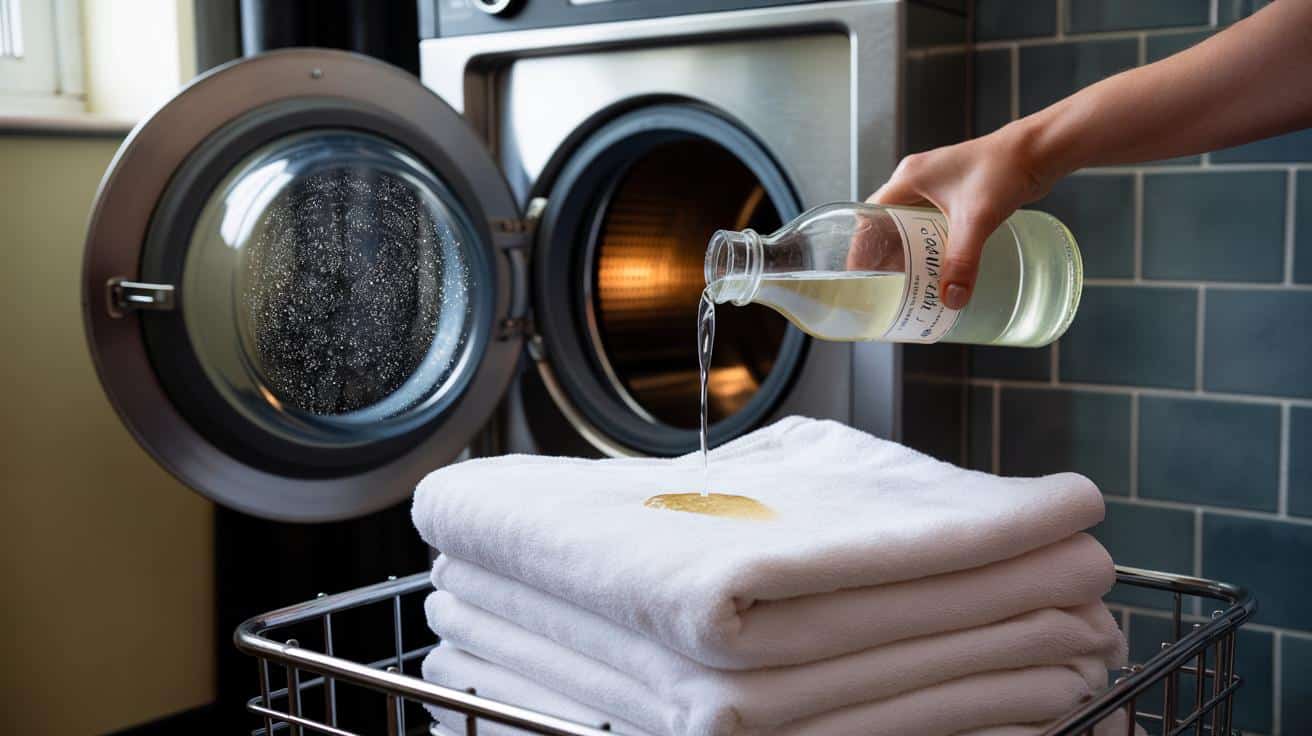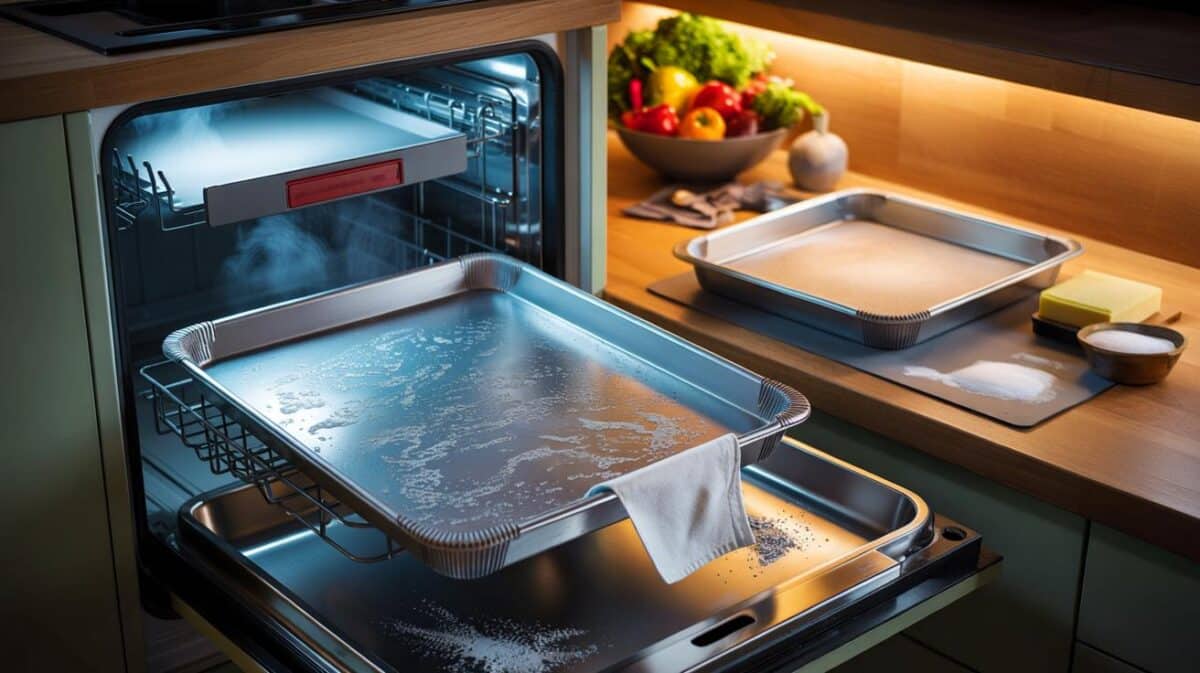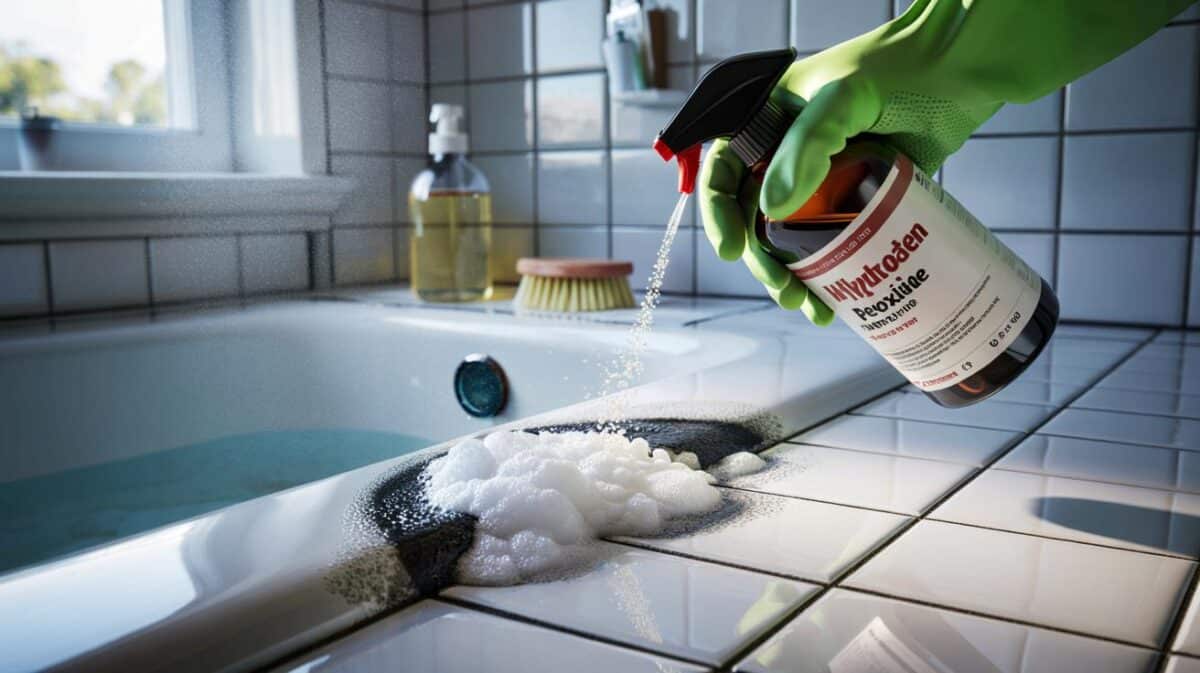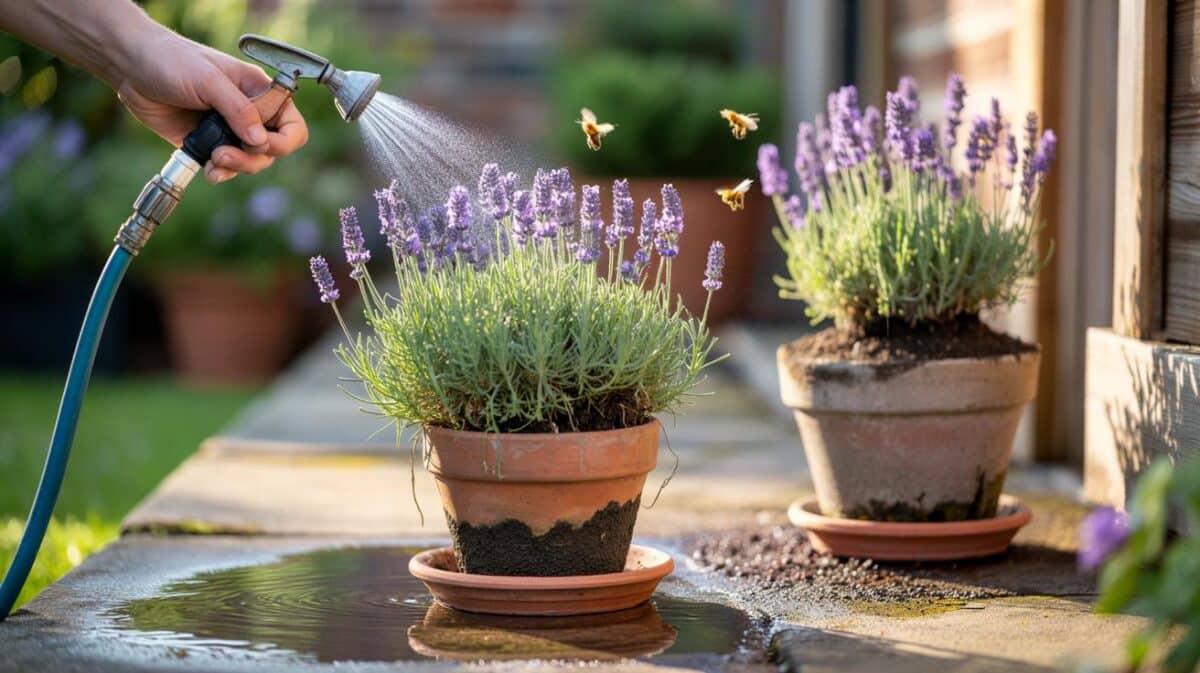They’re the natural result of busy lives, damp bathrooms and detergents that promise “freshness” yet leave a clingy film behind. Hotels rarely have this problem. Their towels come out clean, neutral and quietly luxurious — even when they’ve been through hundreds of washes. So what’s the step they use that most homes skip?
The basement laundry of a city hotel sounds like rain on metal. Carts rattle, steam hisses, and the drum of a 50kg washer throws a steady heartbeat through the concrete floor. I watched a head housekeeper pry open a hatch and pour in a clear liquid that looked like water, then smile the way a chef does when they season without measuring. The scent on the towels wasn’t lavender or lemon — it was nothing. Pure, calm nothing. It wasn’t detergent.
What hotels do differently behind the laundry door
Here’s the quiet truth professionals live by: odour doesn’t come from “dirty” towels alone. It comes from residue baked into loops of cotton, mixed with humidity and time. Hotels break that cycle not with more perfume, but with chemistry. They wash hot, extract hard, and then they “sour” — an acidifying step that shifts the pH and dissolves the cling that feeds must.
I stood in a central London property that turns around close to a thousand towels on a Saturday checkout. The laundry chief swore their rewash pile shrank when they introduced a proper sour rinse. Less re-drying, fewer complaints at reception, and a quieter radio in housekeeping. We’ve all had that moment where you lift a towel to your face and it smells like the back of a cupboard on a rainy day; they simply don’t get those moments any more.
Why does it work? Detergents are alkaline and brilliant at breaking up grime, but left behind they act like glue for minerals and body oils. Hard water adds its own film. An acidic rinse — a “sour” — flips the charge, loosens that build-up and restores the fibre’s neutral feel. Combine that with heat and high-speed extraction, and the damp window where bacteria throw their party disappears. Residue is the real villain, not your machine.
Do the hotel “sour rinse” at home
The secret is a sour rinse—an acidic step hotels swear by. At home, you can mimic it two ways. First cycle: wash towels alone at 60°C with a measured dose of powder detergent and, if they’re white, a scoop of oxygen bleach. Second cycle: run a short wash or extra rinse with 150–250 ml of distilled white vinegar (5% acidity) poured into the softener drawer. Spin fast. Dry hot until fully dry, then give a short cool tumble to relax the fibres. This is the moment your towels stop smelling like the washing machine and start smelling like nothing at all.
Most musty stacks come from small, fixable habits. Too much detergent creates a plush, invisible film. Stuffing the drum blocks rinsing. Letting towels sit damp in the machine for an hour invites that wet-wood note. Fabric softener? Lovely on jumpers, a trap on towels. Let’s be honest: no one actually does that every day. But a sour rinse once a month, plus good drying, changes the whole game.
Hotel staff will also tell you to think like air. Hang towels so loops can breathe, keep bathroom doors ajar after showers, and don’t stack them warm. “Neutral is the smell of clean,” a linen supervisor told me, tapping the rim of a vinegar bottle with her nail.
“We’re not trying to make towels smell of anything. We’re trying to make them smell of nothing.” — Marta, Head Housekeeper, 12 years on the floor
Here’s the quick-reference they hand new starters:
- Wash hot (60°C) with measured detergent; no softener.
- Second cycle: 150–250 ml white vinegar or a teaspoon of citric acid in the rinse.
- High spin; dry fully; brief cool-down; store ventilated.
- Every 6–8 weeks: a “strip” wash for heavy build-up (washing soda + oxygen bleach).
- Retire towels that stay musty after a strip — the loops may be shot.
Fresh towels change the room — and the mood
The way a towel smells shapes how a bathroom feels. Neutral towels make a flat feel lighter, a rental feel cleaner, a morning feel kinder. You don’t need boutique detergent; you need less residue and less damp window. Try the sour rinse once and listen to the silence of your linen cupboard. Fresh isn’t a perfume; it’s the absence of leftovers. Share it with someone who swears their machine is cursed. Watch their face the next day when they open the door and nothing hits their nose at all.
| Point clé | Détail | Intérêt pour le lecteur |
|---|---|---|
| Sour rinse | Use 150–250 ml white vinegar in the rinse to neutralise residue and hard-water film | Removes the root cause of musty odours without perfume |
| Right wash and dry | 60°C wash, high spin, full dry with a short cool tumble | Keeps towels fresh longer and fluffier to the touch |
| Common traps | No fabric softener, don’t overload, measure detergent, avoid leaving damp in drum | Quick fixes that save time, money and frustration |
FAQ :
- How much vinegar should I use?For a standard home machine, 150–250 ml (about 2/3 to 1 cup) in the softener drawer during the rinse is enough.
- Will towels smell of vinegar?No — the scent flashes off in the heat of drying. If you catch a whiff, dry a touch longer.
- Can I do this with coloured towels?Yes. Vinegar is colour-safe at rinse strength and helps keep dyes clear by reducing residue.
- What if the smell comes back fast?Run a “strip” wash: hot cycle with washing soda and oxygen bleach, then a vinegar rinse. Check that you’re not overloading or under-drying.
- Is fabric softener really that bad for towels?On towels, yes. It coats fibres, reduces absorbency and traps odour; the sour rinse replaces it with a clean, neutral finish.









